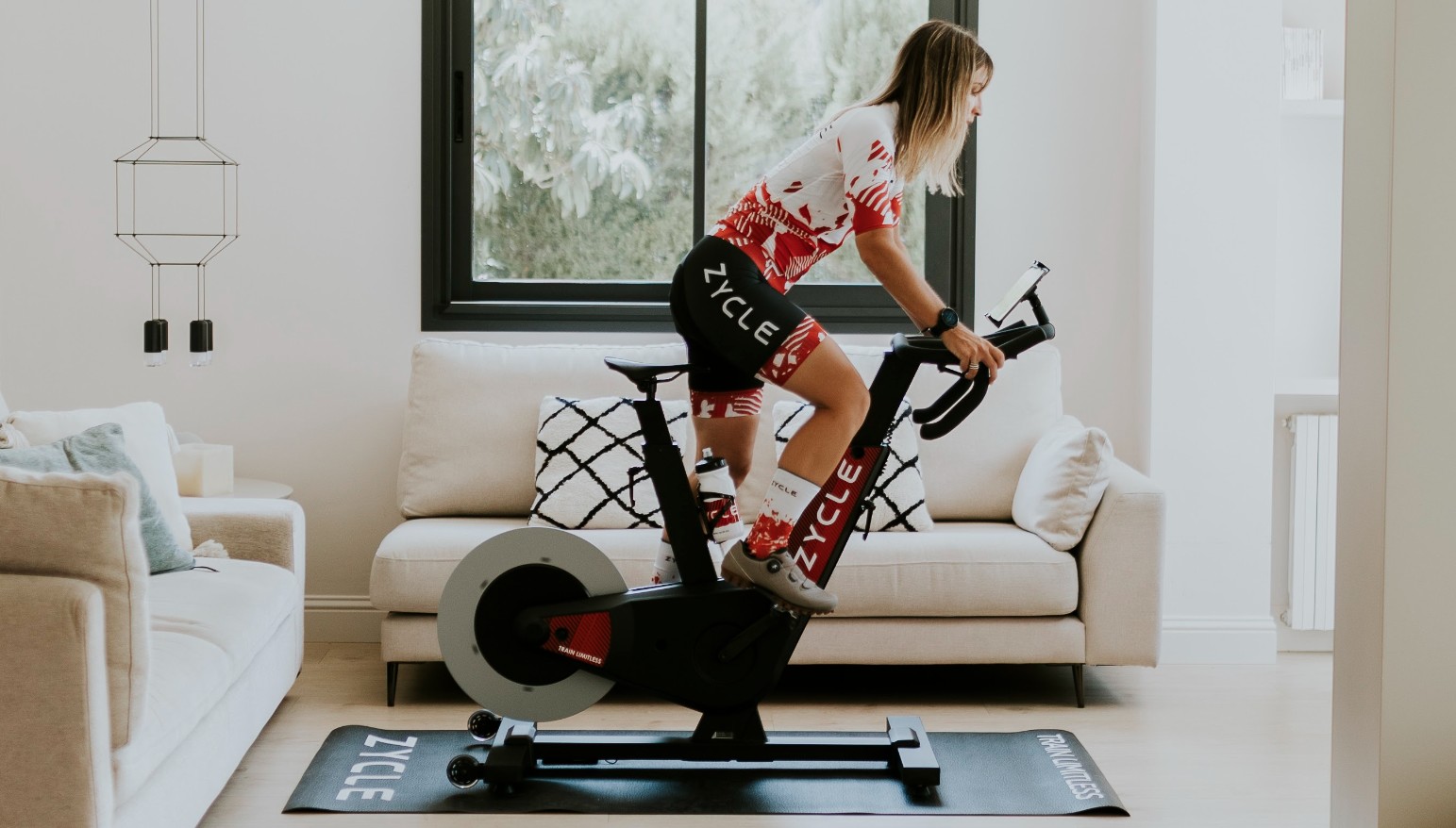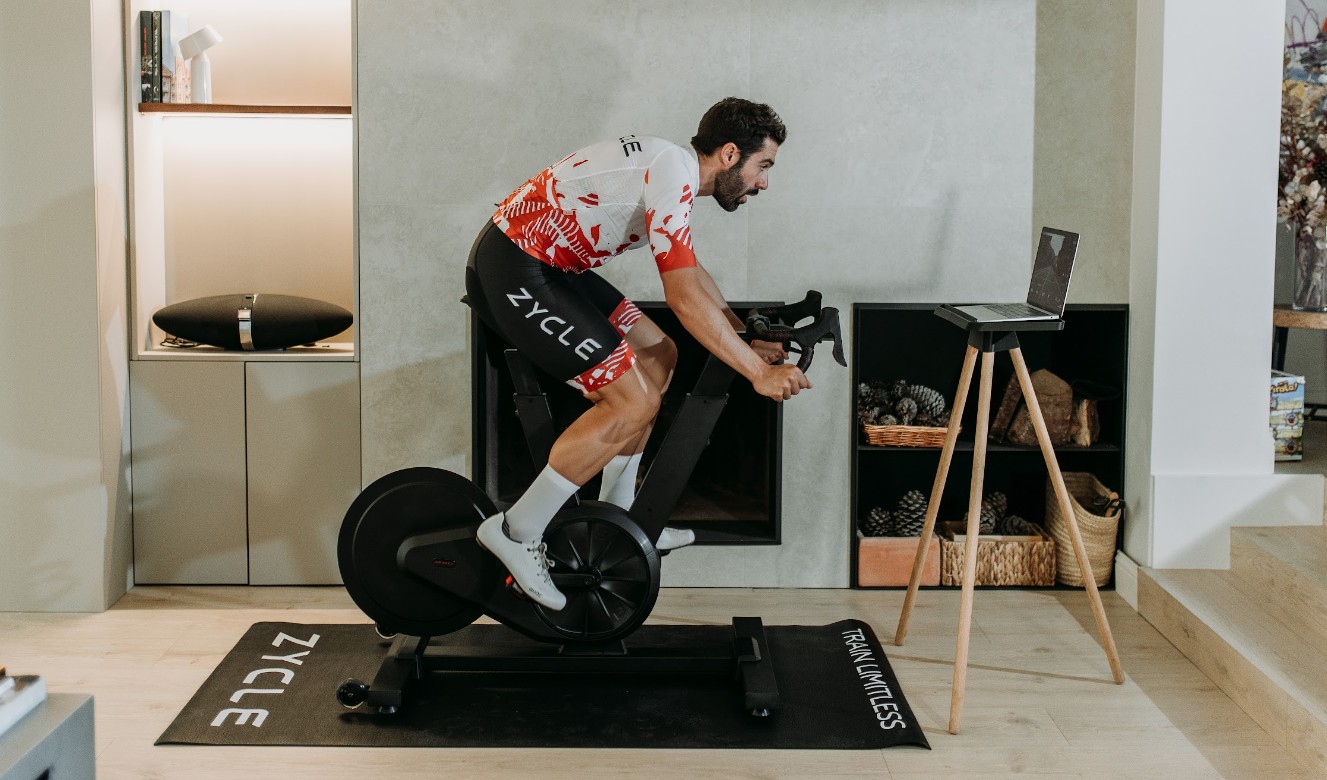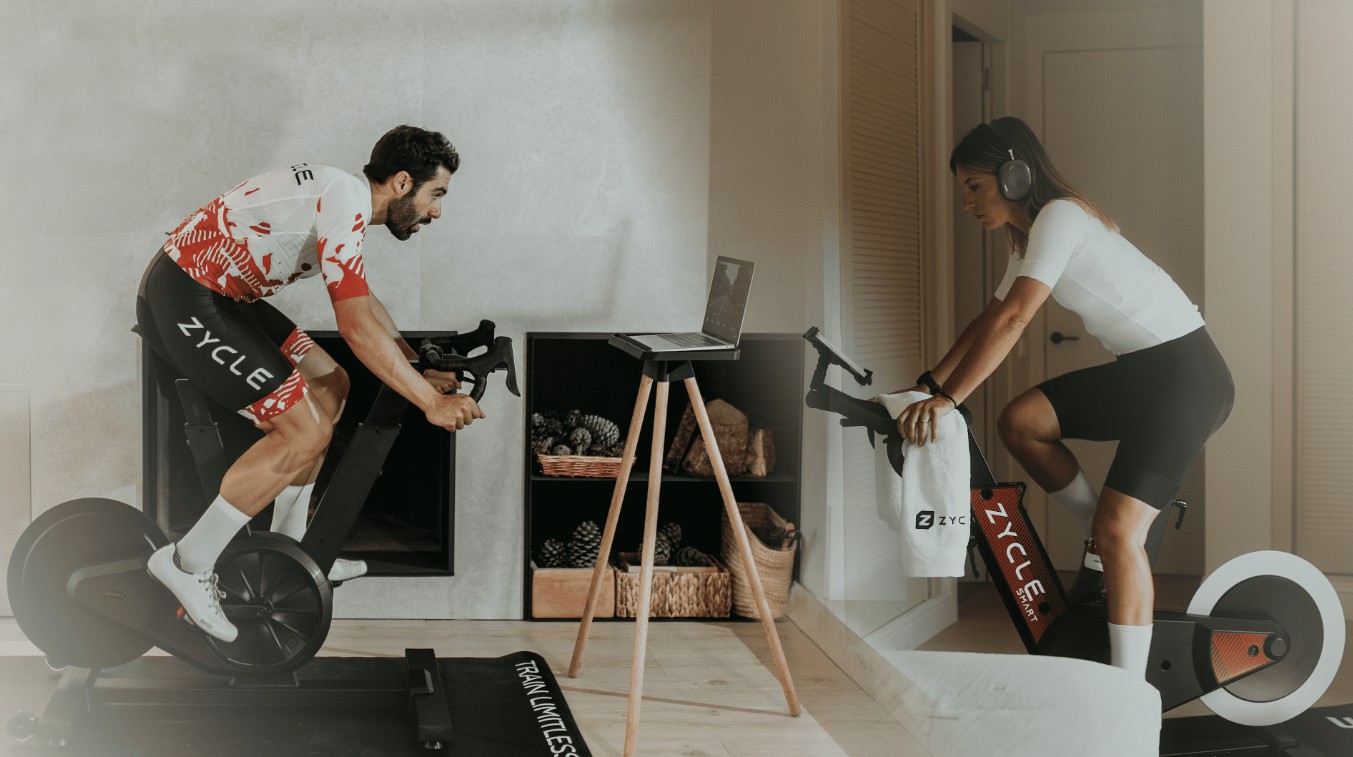Choosing the right bike is the first step to enjoying a good workout experience at home. There are different types of exercise bikes, and although they all have the same goal—to allow you to pedal without moving—not all of them offer the same level of realism, precision, or training options. At first glance, they may seem similar, but the differences between a traditional exercise bike and a spinning or indoor bike are notable. Knowing these differences will help you choose the model that best suits your needs, your level of demand, and your performance goals. Keep reading to find out more!
Types of exercise bikes
Within home cycling, we can distinguish three main types of exercise bikes: the traditional exercise bike, the recumbent exercise bike, and the indoor or spinning bike. Each one is designed for a different type of user and offers a different training experience.
Traditional exercise bike
This is the most common type and is often found in both gyms and homes. Its design focuses on comfort and ease of use. The seat is wider, the posture is more upright, and the resistance can be manual or magnetic. It is aimed at those who want to improve their cardiovascular health, stay active, or do low-intensity exercise. These bikes are perfect for beginners or people looking for a simple and economical option, although their features are more limited and do not allow for technical or professional training.
Recumbent exercise bike
Recumbent exercise bikes offer an extra level of comfort thanks to their wider backrest and seat. The position is semi-seated, with the pedals positioned forward. This design reduces lumbar strain and is ideal for older people, those in rehabilitation, or those who want to exercise their legs with low joint impact. Although their ergonomics are excellent for gentle sessions, they are not designed for indoor cycling or high-performance training, as the pedaling motion and posture differ from traditional cycling.
Indoor or spinning bike
Indoor or spinning bikes are designed to replicate the position, effort, and sensations of road cycling. They are the most complete option and the basis of professional indoor cycling. They have a flywheel that provides continuous and realistic pedaling, and allow you to adjust the seat and handlebars to adopt a sporty posture. There are different models of indoor or spinning bikes depending on their resistance system, which can be:
- Friction: uses pads that rub against the flywheel to generate resistance. They are more economical, but require maintenance and generate some noise.
- Magnetic: uses magnets that create resistance without direct contact. They offer a smoother, quieter, and more durable ride, ideal for frequent and demanding workouts.
This group also includes smart bikes, considered the most advanced evolution in indoor cycling. These smart bikes—such as ZYCLE indoor cycling bikes—allow you to obtain power data, connect to virtual simulators, and automatically adjust resistance to reproduce the real conditions of a route.
Difference between a spinning bike and a stationary bike
The difference between a stationary bike and an indoor (or spinning) bike lies mainly in their design and the type of training they allow you to do. The traditional stationary bike is geared toward more general exercise, focused on health, mobility, or weight loss. Its resistance is usually more limited, and the cyclist’s posture is more upright. In contrast, the indoor or spinning bike is designed for technical training and high-intensity sessions. It offers a more aerodynamic posture, greater precision in resistance, and the possibility of working on power, strength, and cadence with total control. In short, although both are used to keep fit, the indoor bike represents a qualitative leap in realism, customization, and performance.
The ZBike 2.0 and ZBike Infinity, ZYCLE’s smart indoor bikes
At ZYCLE, we are leaders in the world of indoor cycling and we have two models that perfectly sum up this technological evolution: the ZBike 2.0 and the ZBike Infinity. Let us explain their features!
ZBike 2.0

The ZBike 2.0 combines performance and precision with an ergonomic and quiet design. It has self-adjusting magnetic resistance, which guarantees a natural and smooth pedaling feel. Its Poly-V belt drive reduces noise and maintenance, while its maximum power of 2,000 W allows for high-intensity workouts. Among its improvements is the new electronic safety brake, which replaces the lever brake and offers immediate stopping at the touch of a button. In addition, its 170 mm Q-factor mimics the posture of a road bike, promoting efficiency and comfort. Also noteworthy is its Bluetooth and ANT+ connectivity, which facilitates synchronization with the main cycling simulators. Compatible with the ZYCLE app.
ZBike Infinity

The ZBike Infinity is ZYCLE’s technological gem. It incorporates an innovative freewheel system that replicates the feel of real cycling. In other words, it allows you to stop pedaling while the flywheel continues to turn. Its maximum power of 2,000 W, its power meter with a measurement accuracy of less than 1%, and its flywheel equivalent to 16.2 kg make it a high-performance bike. It is also equipped with road handlebars with wireless electronic shifters, 24 customizable virtual gears, and a 152 mm Q-factor, ensuring perfect ergonomics and a completely realistic cycling experience. This bike is compatible with the main simulators and the ZYCLE app, where you can customize the gears, analyze your pedaling power, and enjoy a professional workout from home.


 Cart is empty
Cart is empty 


